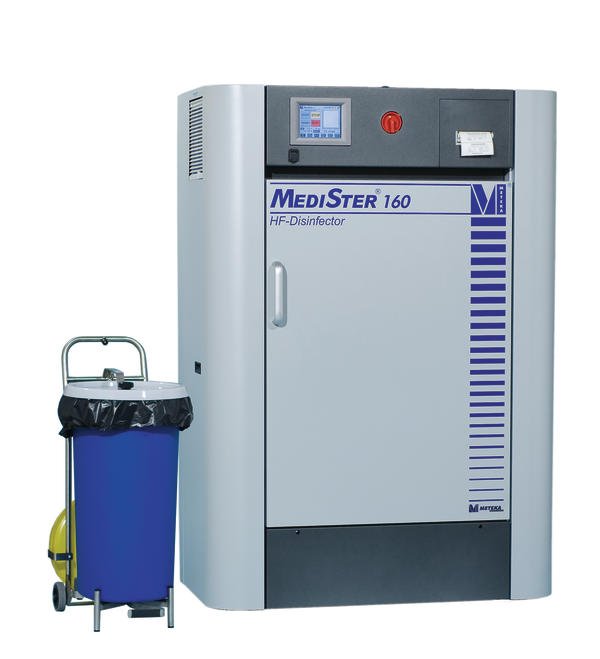At Boehringer Ingelheim’s biopharmaceutical location in Biberach, researchers are focusing specifically on protein therapeutics and, linked to this, technologies for cultivating mammalian cells. In view of the sensitivity of these cells, strict hygienic measures are a constant consideration. In order to prevent biological materials from leaving the premises, the structural researchers concerned use a disposal system manufactured by Meteka, the Austrian supplier.
Numerous new biological active ingredients and biopharmaceutical medications in international use today actually originate from Biberach, where Boehringer Ingelheim operates one of the world’s largest biotechnology facilities, employing more than 4700 people. Biberach is also a premier location for structural research. The task of the Structural Research group is to produce biological target molecules and delineate their three-dimensional structures in atomic detail. Proteins that play a role in the development of a disease are produced in a suitable cell system and then sanitised. This procedure yields solid waste products, for example from insect cell expression, which contain contaminants and baculoviruses. Contaminants from the bacterial culture of the S1 cell culture range, such as agar slides, centrifuge bags and contaminated consumption goods, must likewise be disinfected before they leave the lab. For this purpose, researchers use a disposal system based on microwave technology that is located directly in the laboratory. This so-called Medister unit from Meteka, the Austrian supplier, makes infectious and potentially infectious wastes harmless directly in the lab within a short time. “Compared to autoclaves, the unit has the advantage that, firstly, it requires little space and secondly, it also saves us a great deal of time, since its operating cycle is one-third shorter“, explains Dr. Margit Bauer of the Structural Research group. “As a result, we can speed up the laboratory and rinsing processes considerably.“
The waste products are first collected directly in the laboratory in a special airtight and watertight container. Once this is full, it is placed in the Medister HF unit. There, the waste is automatically moistened and subsequently heated from the inside to the outside using a thermal process. The temperature remains at a constant +100 °C for 25 minutes. “Thanks to this even-heat process, previously contaminated waste – its volume reduced by 30 to 50 % – can be disposed of together with household waste without any problems“, says Dr. Helmut Katschnig, Head of Research and Development at Meteka. The difference compared to other processes is that microwave technology makes it possible to handle large quantities of infectious waste rapidly and efficiently, even if it has an inhomogeneous composition – without the need to break it into smaller pieces first or treat it chemically in any way. “In addition, the unit makes more sparing use of water and energy, and it is easier to operate than cabinet autoclaves with a similar capacity“, Bauer adds. This is why the unit has now also been installed in Upstream Development at Boehringer Ingelheim Production.
The Medister 160 HF waste disinfection unit holds 60 l. The Medister 160 can destroy germs with resistance levels I to IV, in other words all types of virus, all vegetative germs and all parasites and fungi.
Online-Info www.cpp-net.com/2310452
Share:









